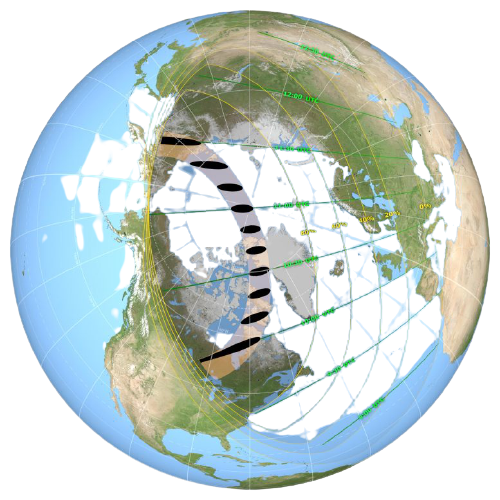
On Thursday, June 10, 2021, individuals across the northern side of the equator will get the opportunity to encounter an annular or incomplete obscuration of the Sun.
A sun-oriented overshadowing happens when the Moon moves between the Sun and Earth, projecting a shadow on Earth, completely or incompletely obstructing the Sun's light in certain spaces. During an annular obscuration, the Moon is far enough away from Earth that the Moon seems more modest than the Sun in the sky. Since the Moon doesn't impede the whole perspective on the Sun, it will resemble a dim circle on top of a bigger, brilliant plate. This makes what resembles a ring of fire around the Moon. Individuals in pieces of Canada, Greenland, and northern Russia will encounter the annular shroud.
In certain spots, watchers will not see this ring around the Moon. They'll rather encounter a fractional sun-oriented overshadowing. This happens when the Sun, Moon, and Earth are not by and large arranged. The Sun will seem to have a dull shadow on just a piece of its surface. Watchers in pieces of the eastern United States and northern Alaska will see a fractional sun-based obscuration on June 10, alongside a lot of Canada and parts of the Caribbean, Europe, Asia, and northern Africa.
In the United States, the halfway overshadowing will be appearing along with parts of the Southeast, Northeast, Midwest, and Northern Alaska. In a considerable lot of these areas, the shroud will happen previously, during, and not long after dawn. This implies that watchers should get an unmistakable perspective not too far off during dawn to see the shroud.
Instructions to Safely Watch an Annular or Partial Eclipse
It is never protected to gaze straight toward the Sun's beams, regardless of whether the Sun is part of the way or for the most part darkened. When watching a fractional sunlight-based shroud or annular sun-powered obscuration, you should wear sun-oriented survey or overshadowing glasses all through the whole obscuration on the off chance that you need to point toward the Sun. Sun-based survey or shrouds glasses are NOT customary shades; normal shades are undependable for reviewing the Sun.